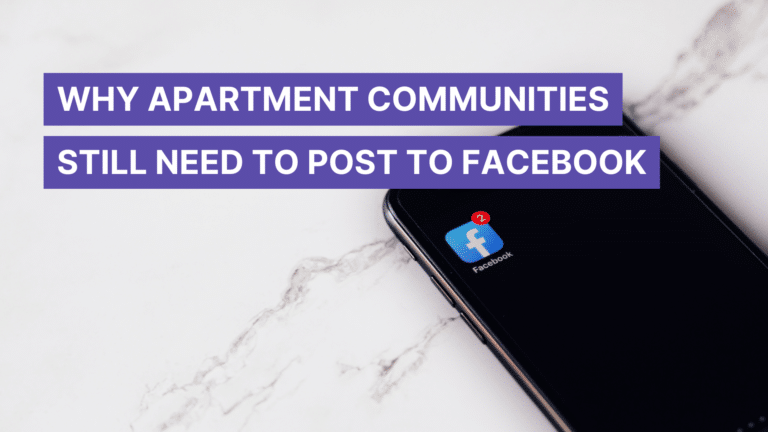There’s not much a pet parent won’t do for their furry children. (Pets are the new kids, after all).
And since the largest generation of pet owners is now the largest generation of apartment renters, property owners and managers may find a marketing benefit to alerting their pet policies to care for their four-legged residents.
Pet ownership and apartment living overlap the most for millennials, who are 25 to 40 years old. This highly influential generation helped to shift the conversation from “pet friendly” apartment communities, in which pets are tolerated in exchange for pet deposits and fees, to “pet inclusive,” which offers a welcoming environment by waiving deposits and fees as well as breed and weight restrictions.
According to the Pet-Inclusive Housing Initiative report, residents of apartment communities with inclusive pet policies stay 21 percent longer. This means communities can save on advertising and unit turn costs because residents aren’t moving out as frequently. Further, vacancies in pet-inclusive communities filled faster, representing even more savings.
Apartment communities that have eased restrictions on pets can increase lease renewals, attract more leads, and have a stronger bottom line overall, according to a report from the Pet-Inclusive Housing Initiative.
This shift is one of many changes in Multifamily that can be attributed to the COVID-19 pandemic. During the height of the pandemic, many people welcomed a new pet into their lives, and pet ownership in the U.S. went from 67 percent to an all-time high of 70 percent.
As a result, we’re seeing more communities rethink their pet policies to further accommodate prospects with four-legged residents. In this post, we’ll explore how pet-inclusive housing can help increase rental renewals and set your community apart from the local competition.
Pet-friendly isn’t enough
The Pet-Inclusive Housing Initiative report says that 76 percent of Multifamily operators identify their properties as allowing some pets, but the same report shows that residents often find that these pet-friendly policies are lacking. For example, according to the report:
- 72 percent of residents surveyed said pet-friendly housing is difficult to find.
- 59 percent said pet-friendly housing is too expensive.
- 24 percent said they had to relocate because of their pet.
- 14 percent have surrendered their pet as a result of their housing situation.
Apartment operators must strike the right balance of welcoming pet-owning residents with ensuring that residents without pets feel comfortable, as well as protecting the community’s assets.
Many communities continue to have weight and breed restrictions on dogs. While 76 percent of Multifamily operators say their communities are pet-friendly, only 8 percent are free of restrictions.
But, as the PIHI report points out, having breed and weight restrictions doesn’t necessarily mean a resident won’t have a prohibited pet in their apartment. According to the report, 11 percent of all renters have a pet they’re not allowed to have. So, in some cases, having breed and weight restrictions just means that if your community charges pet fees or deposits, you could be missing out on that income.
From pet-friendly to pet-inclusive
The PIHI report offers a roadmap to how apartment communities can transition from being merely pet-friendly to pet-inclusive in ways that drive good business results. Among the suggestions:
- Eliminate pet deposits and fees. The Management Group in Atlanta got rid of breed and weight restrictions and does not charge pet rent. Instead, it screens individual pets and owners through a third-party pet screening service during the application process. TMG has also added pet amenities such as pet waste stations, water bowls and dog parks. As a result, resident satisfaction has increased and TMG has an 80 percent renewal rate among pet-owning residents.
- Remove breed and weight restrictions. The average weight limit for dogs in rental housing is 45 pounds. There are misconceptions about large dogs and certain dog breeds, and these restrictions are often arbitrary. As the PIHI report explains, many large dogs that go against policy are “low energy” and make great apartment dogs, while some smaller dogs, which are more easily permitted, can have energy to spare. A better practice is to view dogs as individuals rather than part of a category.
- Consider allowing residents to have multiple pets. Many Americans have more than one pet. In fact, some pets require a second animal in the home to be happy. So a forward-thinking pet policy should accommodate that.
- Work with animal shelters and rescues. Organize adoption events on the grounds of your community and allow residents to foster animals without charging any pet fees.
- Talk to your insurance company. Many communities say that their insurance policy demands that they screen for certain dog breeds, but policies without pet-related restrictions are available to Multifamily communities. Consider changing providers that are more pet-inclusive without adding an additional cost.
- Require renter’s insurance. This can help reduce liability and risk because renter’s insurance can cover animal-related claims in addition to covering residents’ belongings.
- Welcome pets by adding pet-related amenities. These can include designated pet exercise areas, washing stations and pet waste bags. Doing so will show prospects that the community cares about the comfort of pets and their owners.
Promote your policies
Apartment operators that have inclusive pet policies should include it in their marketing efforts in order to attract and retain pet-owning residents.
- Highlight your pet policies in your renewal letters. To encourage renewals, waiving pet rent for a period of time may encourage residents to stay long-term, contributing to the community’s bottom line.
- Build your policy into your marketing efforts. Advertise on websites that promote pet-friendly housing, include it on your website and on your social media accounts, and use pet photos in your marketing materials.
- Check out what your competition is doing. For example, if the apartment community down the street only allows one pet, you can set your community apart by allowing multiple pets and including this messaging in your marketing.
- Don’t forget about residents who don’t own pets. The goal is to make all residents feel comfortable living in your community, so consider posting signs about noise, reminding owners of the lease policy and to pick up after their pet.
Live happily with your pets
Most pet owners say that it’s difficult to find housing that allows pets, so pet-inclusive housing has a major advantage in the marketplace. Once residents have lived in an environment that is supportive of pet ownership, they’re less likely to give it up. Ultimately, pet-inclusive policies can draw in residents who are willing to stay for the long haul, which will make your apartment financially healthy for years to come.






